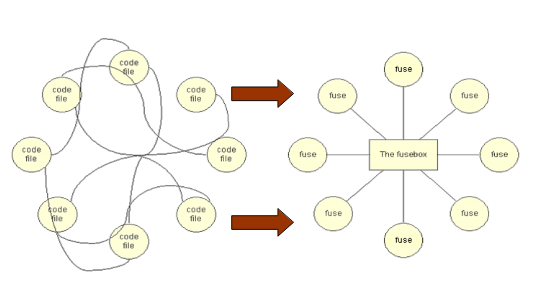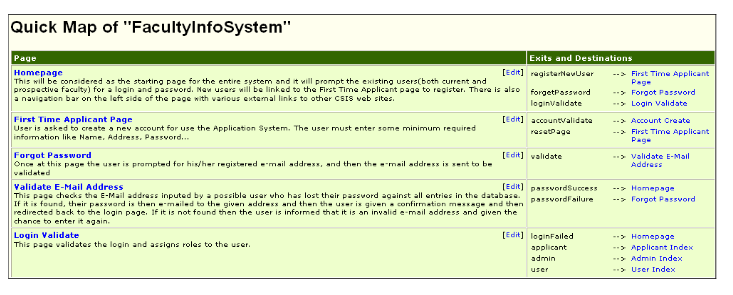ABSTRACT:
The Faculty Information System is a web-based application designed to track current and prospective faculty information for the School of Computer Science and Information Systems (CSIS) at Pace University. This application provides a user-friendly web interface for prospective faculty to add, manage and submit their curriculum vitae.
The application stores details of all faculty vitae in a searchable database to be reviewed by authorized personnel and matched to a suitable position. Current faculty will use the same interface to update their academic achievements and credentials.
Microsoft SQL Server is used for the backend database and Cold Fusion and Fusebox for developing the web interface. This paper includes a detailed description of the application and the methodology used to implement it. The paper concludes with a hand-off to the client with a recommended exit strategy listing future enhancements.
METHODOLOGY
Our goal to develop a robust, user-friendly and efficient database driven; web-based application required a structured and systematic approach. In the traditional Point-to-Point programming methodology, forms, screens, database objects, etc., become intertwined into a complex ‘web’ of functionality.
The resulting spaghetti code, as shown in Figure 1, is often not documented and is definitely expensive to maintain over time. ‘Fusebox ’ is a standard framework for building complex web applications and its methodology, ‘FliP,’ Fusebox Life Cycle Process, introduces an elegant new way of managing the software development process in a few simple steps.
As the first step, the system was wireframed. ‘Wireframing’ is a way to quickly model the proposed actions that will be performed by the application. In web-speak, a wireframe is a skeletal rendering of every click-through possibility on your site a text-only “action,” “decision” or “experience” model.
Its purpose is to maintain the flow of your specific logical and business functions by identifying all the entry and exit points you r users will experience on every page of your site. Figure 2 shows the wireframe model of the first few actions performed by the Faculty Information System.
Cold Fusion is a Web application development tool that allows developers to build dynamic data-driven applications for use on the Internet and intranets. With Cold Fusion, you can develop everything from intranet database applications and groupware to E-commerce applications.
Cold Fusion employs a high-level server-side markup language called CFML (Cold Fusion Markup Language) to interact with relational databases, Crystal Reports, SMTP and POP servers, and a whole host of other network technologies.
RELEVANCE IN THE CONTEXT OF OTHER WORK
In the current ‘Internet Era’, many Schools and Universities are moving towards online resumes. Their main goal is to make the hiring process simple, efficient, quick and especially user-friendly. Although there are a few systems similar to the ‘Faculty Information System’, the ones available differ in some important features.
One interesting feature in the MIT’s Staffing Service is that even a current faculty can use the service to apply for an available position. Our system does not have provisions do to that. The current faculty at Pace can only update his information.
USE CASE SCENARIO
Any individual using the Faculty Information System for the first time should register with the system as shown in Figure 4. After the registration process, the user will have his unique user name and password which he can use to login. Once registered,the applicant is guided through several steps.
RECOMMENDATIONS FOR THE FUTURE
While this is technically a complete system, the opportunities for expanding are almost limitless. Here are a few additional features we recommend to be added in the next version.
Some useful additions to this system might be to
- Log and document all electronic communications between an applicant and the reviewer(s). Although this facility has its merits, it has its limitations too. It would take up a significant amount of space on the server. In addition it could give rise to concerns regarding confidentiality and security.
- The current system has been designed and implemented as per the requirements of the School of CSIS. By expanding the system further, it can be made suitable to cater to the needs of the remaining academic schools within Pace University.
- When the system has been upgraded and ready to be used by all the departments/divisions within Pace, it could be integrated into the Blackboard System (or whichever portal system).
Source: Pace University
Authors: James Curry | Aaron Flocke | Geetha Krishnasamy | Leena Paulose


